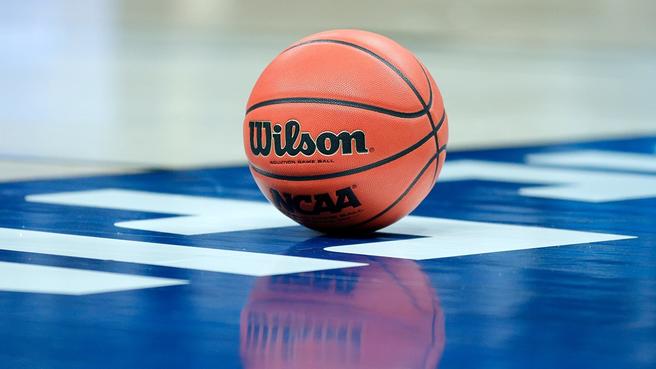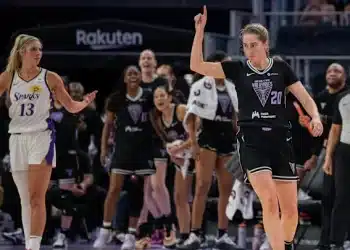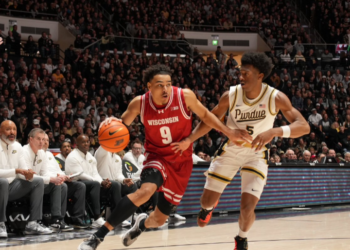By: Zach Draves
A picture is worth a thousand words.
With one snap and one post, the world is now reckoning with what is actually hindering women’s sports.
It is not trans women and girls that are threatening women’s sports.
In fact, the NCAA is the main culprit.
Not only do they often brush cases of sexual abuse routinely under the rug (Michigan State, LSU, Baylor, Oregon State) but they simply don’t monetarily prioritize women’s sports.
As the NCAA tournament takes shape, this photo taken by Stanford University Sports Performance Coach Ali Kershner of two different weight rooms displays the obvious discrepancies in how men’s and women’s sports are treated.

(Courtesy: CNN)
The amenities for the women’s teams included a single rack of dumbbells whereas the men’s teams were provided the whole physical fitness enchilada.
A barrage of responses on social media from collegiate and professional athletes rightfully called out the stark hypocrisy of the NCAA.
Among the thousands of voices being amplified, the one response that was as raw and honest as you can get was the emphatic statement of legendary South Carolina Women’s Basketball Coach Dawn Staley.
#WHATMATTERS pic.twitter.com/QTQzCwbnZT
— dawnstaley (@dawnstaley) March 20, 2021
The NCAA and its president Mark Emmert went into immediate damage control and because they were caught they provided the women’s players the top-notch amenities that the men receive.
Let’s be clear the NCAA is being disingenuous when they say that this shouldn’t be happening because they are the ones who created this firestorm in the first place.
Ever since Title IX became law in 1972, there has been a revolution of women and girls competing in all levels of sports, but even as the law explicitly states that schools and universities need to provide equal opportunities or risk losing federal funds, these institutions always find some sort of backdoor to get out of their full obligations and the NCAA turns a blind eye.
In other words, opportunities are available but they don’t publicize, hype up, or financially invest in women’s sports in the same way they do men’s sports.
An argument that is routinely made is that certain women’s sports are lost revenue or seen as a bad investment, but given that the NCAA generates over $1 billion a year they can very easily provide adequate support and resources.
This is a problem not just solely confined to the NCAA as major media outlets don’t often cover women’s sports and another argument put forth is that there is an absence of an audience.
But even before the COVID-19 pandemic hit, the 2019-2020 season saw a surge in the demand for tickets to women’s basketball games and in many cases more demand than the men’s teams.
Also, the visibility and recognition of women athletes across all sections of the sporting world have grown, and not only have these athletes have dominated they are also shedding light on the vast gender inequities that still exist.
Furthermore, in the media landscape, in the largely toxic masculine arena of sports radio, there is an ongoing effort to delegitimize the very presence of women’s sports and women athletes altogether.
And yet these are the same people who claim to be championing or in their words “protecting” women’s sports when they attack trans athletes, particularly trans women and girls, for wanting to take in the joys of sports.
But in reality, if you were to ask these people, namely the Tucker Carlsons of the world, they could not name a single woman athlete that they are a fan of and the last time they watched a women’s sporting event.
If there is anything that can be taken away from the NCAA’s failures is that there are legitimate threats to the overall standing of women’s sports and they are NOT other women.
It is the institutional structures at play reinforcing gender inequity and denying women athletes basic dignity and respect.
Nearly 50 years after Title IX we got more work to do before we can ask ourselves, have we come a long way baby?


 NFL
NFL





